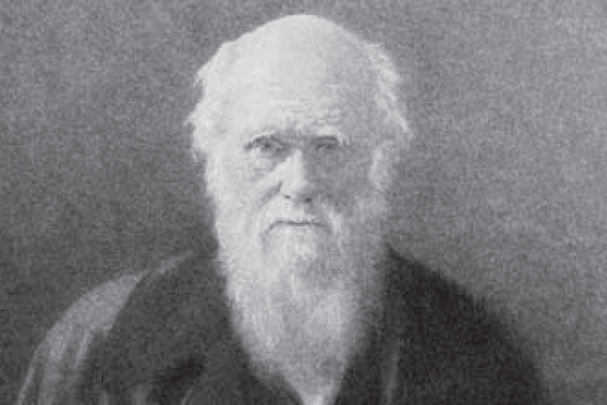This article first appeared in the Christian Research Journal, volume 35, number 01 (2012). The full text of this article in PDF format can be obtained by clicking here. For more information about the Christian Research Journal, click here.
As scientific debates become increasingly politicized, materialists seek to cast proponents of intelligent design (ID) as not just wrong, but also ignorant, irrational, immoral, or even dangerous. Four years ago the Council of Europe took this to the extreme, resolving that teaching ID might be a “threat to human rights.”1 Though the intensity of such rhetoric has increased in recent years, this trend is not new. Defenders of Darwinian orthodoxy aim to win the argument by ridicule and strong-arm tactics rather than reasoned discourse.
In 2000, Dale L. Sullivan recognized in Technical Communication Quarterly that “published ridicule” is deployed to defend evolution by “hold[ing] heretics up to public scorn in displays of derision.” According to Sullivan, the goal is to “de-authorize publications that could be perceived as dangerous to the community,” where “the ultimate rhetorical effect…is to silence the voices of the authors and thereby to control the scientific forum.”2
Similarly, a 2009 paper in the Journal of Science Communication by Inna Kouper observes that “emotional and often insulting evaluations are very common” among Darwin defenders, who “seem to be eager to demonstrate not only their rightness, but also to distinguish their group of reasonable and worthy individuals from others, who are wrong, unintelligent, and overall worthless.” In Kouper’s view, “the frequency of such evaluations and mockery undermines the goals of rational debate and criticism.”3 Such attacks intimidate scientists who are skeptical of Darwinian evolution into silence, lest they become targets. The result is de facto censorship.
If Sullivan and Kouper are correct, then ID critics must view Michael Behe’s book The Edge of Evolution: The Search for the Limits of Darwinism as dangerous, as it has faced severe ridicule, scorn, mockery, and derision. Behe’s critics argue not just that he’s wrong, but that he’s completely, pitifully, and exhaustively wrong, and very likely incompetent and dishonest. Rhetorician Thomas Woodward calls this the “sledgehammer technique,”4 for it goes far beyond mere scientific analysis.
REVIEWING THE REVIEWERS
The first prominent review of The Edge of Evolution appeared in Science soon after the book was published in 2007.5 Written by Sean B. Carroll, it attacked Behe’s competence, calling the arguments “so poorly conceived and readily dispatched that he has unwittingly done his critics a great favor in stating them.” Wielding the sledgehammer, Carroll concludes, “Design has no scientific leg to stand on.”
The next major review came out in Nature, by Kenneth Miller.6 Feigning pity, he writes that “Behe’s new book is an attempt to give the intelligent-design movement a bit of badly needed scientific support.” Also invoking the sledgehammer, Miller cites “the intellectual desperation of the intelligent-design movement as it struggles to survive in the absence of even a shred of scientific data in its favour,” and charges Behe with a “breathtaking abuse of statistical genetics.”
Paul Gross’s review in The New Criterion also portrays the book as a flawed rescue attempt. According to Gross, “The Edge of Evolution is Behe’s heroic effort to snatch victory from the jaws of defeat,” but “it would need a book longer than The Edge” to correct its “errors and omissions.”7 He concludes by repeating Miller’s allegation of Behe’s supposed “breathtaking abuse of statistical genetics.”
Writing in The New Republic, Jerry Coyne likewise labels Behe’s book a “pathetic” attempt to “resurrect his campaign for ID.”8 Coyne also accuses Behe of moral wrongdoing, asserting a “willful ignorance of the evolutionary process” and that Behe is “disingenuous.”9
No review was as harsh as Richard Dawkins’s in a Sunday edition of the New York Times. Dawkins claims to “feel sorry” for Behe, because The Edge seems written by “a man who has given up.”10 According to Dawkins, Behe is “trapped along a false path of his own unintelligent design” and “has cut himself adrift from the world of real science.” Dawkins concludes by calling Behe “the disowned biochemist from Lehigh University” who should “re-establish his scientific credentials and start over.”
The simplistic rhetorical formula for rebutting Behe in these reviews is remarkably constant:
- First, assert ID has failed, and then mock the book as a futile comeback attempt.
- Next, critique The Edge of Evolution—not just for scientific analysis, but to take the sledgehammer approach, claiming ID has no merits whatsoever.
- The conclusion is that Behe has lost credibility and may be dishonest.
The message is that if you agree with Behe or defend him, you might share his fate. Again, the result is intimidation and de facto censorship.
REVERSE-ENGINEERING THE BEHE REBUTTAL FORMULA
The primary substantive critique leveled against The Edge pertains to a statistic Behe cited to claim the probability of a malaria cell evolving resistance to the antibiotic drug chloroquine is one in 1020. Behe claimed this showed the difficulty in evolving simple biochemical traits. Ken Miller replied that chloroquine resistance can evolve in a stepwise fashion. According to Miller, this shows chloroquine evolves easily, leading to the aforementioned charge of Behe’s “breathtaking abuse of statistical genetics.” Other reviewers followed Miller, missing Behe’s point.
Everyone agrees that Darwinian evolution works best when each small step along an evolutionary pathway provides some selective advantage. Behe even notes that “if only one mutation is needed to confer some ability then Darwinian evolution has little problem finding it.”11 However, when multiple mutations are simultaneously required to gain a functional advantage, Darwinian evolution gets stuck. As Behe explains, “If more than one is needed, the probability of getting all the right ones grows exponentially worse.”12 Even Jerry Coyne concurs, admitting, “natural selection cannot build any feature in which intermediate steps do not confer a net benefit on the organism.”13
Behe’s critics mistakenly think he derived the “one in 1020 cells” statistic by multiplying the probabilities of stepwise mutations, misunderstanding how Darwinian evolution works. But it is the critics who misunderstand: Behe’s statistic was obtained empirically, from public health data reported in a review published by a leading malaria authority in the prestigious Journal of Clinical Investigation.14
For Behe’s purposes, it matters not whether the mutations generating chloroquine resistance in malaria arise in a stepwise or simultaneous fashion. Whatever pathway taken, the statistic is an empirically observed objective data point. Given the trait’s rarity, Behe reasonably inferred that the resistance requires multiple mutations; if there were a simple evolutionary pathway, the resistance would not be so rare.15
This rarity led Behe to a deeper point: if thousands of trillions of cells are necessary to evolve a simple biochemical trait, what must occur to produce more complex systems requiring many fundamentally new genes and proteins? Since higher organisms don’t have short generation times and huge population sizes like rapidly evolving malaria-causing microorganisms, Behe argues that the evolution of such systems is unlikely.
RESEARCH PAPERS BACK BEHE
A growing number of peer-reviewed scientific papers are confirming Behe’s arguments.
In 2004, Behe copublished a study in Protein Science with physicist David Snoke showing that if multiple mutations were required to produce a functional bond between two proteins, then “the mechanism of gene duplication and point mutation alone would be ineffective…because few multicellular species reach the required population sizes.”16 In 2008, Behe and Snoke’s would-be critics tried to refute them in the journal Genetics, but failed. They found that to obtain only two simultaneous mutations via Darwinian evolution within humans “would take > 100 million years,” which they admitted was “very unlikely to occur on a reasonable timescale.”17
Pro-ID molecular biologist Douglas Axe corroborated these results in a 2010 peer-reviewed study in BIO-Complexity, which calculated that when a “multi-mutation feature” requires more than six mutations to give a benefit, it is unlikely to arise in the history of the Earth.18 Axe’s previous research published in Journal of Molecular Evolution had suggested that many simultaneous changes would be necessary to produce new functional protein folds.19 Another study by Axe and Ann Gauger found that merely converting one enzyme into a closely related enzyme—the kind of conversion that evolutionists claim can easily happen—would require a minimum of seven simultaneous changes,20 exceeding the probabilistic resources available for evolution over the Earth’s history. Another empirical study by Gauger and biologist Ralph Seelke similarly found that when merely two mutations were required to restore function to a bacterial gene, even here Darwinian evolution failed.21
These studies suggest that chloroquine resistance must have a stepwise evolutionary pathway; if it didn’t, then it could never have evolved in the first place. None of this contradicts Behe, nor is it good news for Darwinism. Behe’s point isn’t that chloroquine resistance can’t evolve. Obviously it does, and Behe (and all ID proponents) accept that antibiotic resistance is a real phenomenon. One resistant cell in 1020 may sound rare, but Behe observes that since there are so many malaria cells, available probabilistic resources allow resistance to appear about once per year.
However, just because this particular feature is within the “edge of evolution” doesn’t imply that all biological systems are. The extreme rarity of a trait as simple as chloroquine resistance, coupled with the findings of the studies cited above, suggest there is too much specified complexity in many biological systems to be generated by Darwinian processes under reasonable evolutionary timescales. ID’s research program is converging on a consensus: complex biological features cannot arise by Darwinian mechanisms, but require an intelligent cause.
REFORMING THE RHETORIC
The “Edge of Evolution rebuttal formula” provides a useful case study of what Sullivan and Kouper call the published ridicule, scorn, and mockery used to “deauthorize” a publication. When successful, this tactic causes de facto censorship by intimidating scientists into silence about their agreement with ID.
While such rhetoric may shut down discourse in the short term, optimists might hope that in the longer view—the one that matters most—the evidence wins. In this regard, it is crucial that ID proponents resist the temptation to respond in kind to ID critics. If ID proponents continue to pursue their blossoming research programs and defend their findings with respectful, civil, science-based arguments, eventually the evidence for design in nature will carry the day.
Casey Luskin is an attorney with graduate degrees in science and law. He is research coordinator for the Discovery Institute, and cofounded the Intelligent Design and Evolution Awareness (IDEA) Center.
NOTES
- “The dangers of creationism in education” (September 17, 2007), at http://assembly.coe.int/main.asp?Link=/documents/workingdocs/doc07/edoc11375.htm.
- Dale Sullivan, “Keeping the Rhetoric Orthodox: Forum Control in Science,” Technical Communication Quarterly 9 (Spring 2009): 137, 139.
- Inna Kouper, “Science blogs and public engagement with science: practices, challenges, and opportunities,” Journal of Science Communication 9 (2009): 6.
- Thomas Woodward, Darwin Strikes Back: Defending the Science of Intelligent Design (Grand Rapids: Baker, 2006), 109.
- Sean Carroll, “God as Genetic Engineer” Science 316 (2007): 1427–1428.
- Kenneth Miller, “Falling over the edge,” Nature 447 (2007): 1055–56.
- Paul Gross, “Design for Living,” The New Criterion 26 (2007): 70.
- Jerry Coyne, “The Great Mutator (review of The Edge of Evolution, by Michael J. Behe),” The New Republic, June 18, 2007, 38.
- Ibid., 42–43.
- Richard Dawkins, “Inferior Design,” New York Times, http://www.nytimes.com/2007/07/01/books/review/Dawkins-t.html (July 1, 2007).
- See Michael Behe, “Is There an ‘Edge’ to Evolution?” at http://www.faithandevolution.org/debates/is-there-an-edge-to-evolution.php.
- Ibid.
- Coyne, “The Great Mutator,” 42. Coyne asserts he knows no examples where this is the case.
- Nicholas White, “Antimalarial Drug Resistance,” Journal of Clinical Investigation 113 (2004): 1084–1092.
- Richard Dawkins uses identical reasoning to infer the rarity of a trait. See Casey Luskin, “Richard Dawkins’ The Greatest Show on Earth Shies Away from Intelligent Design but Unwittingly Vindicates Michael Behe” at http://www.evolutionnews.org/2009/10/richard_dawkins_the_greatest_s026651.html.
- Michael Behe and David Snoke, “Simulating Evolution by Gene Duplication of Protein Features That Require Multiple Amino Acid Residues,” Protein Science 13 (2004): 2651–2664.
- Rick Durrett and Deena Schmidt, “Waiting for Two Mutations: With Applications to Regulatory Sequence Evolution and the Limits of Darwinian Evolution,” Genetics 180 (2008): 1501–9.
- Douglas Axe, “The Limits of Complex Adaptation: An Analysis Based on a Simple Model of Structured Bacterial Populations,” BIO-Complexity 2010, 4: 1–10.
- Douglas Axe, “Estimating the Prevalence of Protein Sequences Adopting Functional Enzyme Folds,” Journal of Molecular Biology 341 (2004): 1295–1315; Douglas Axe, “Extreme Functional Sensitivity to Conservative Amino Acid Changes on Enzyme Exteriors,” Journal of Molecular Biology 301 (2000): 585–95.
- Ann Gauger and Douglas Axe, “The Evolutionary Accessibility of New Enzyme Functions: A Case Study from the Biotin Pathway,” BIO-Complexity 2011, 1: 1–17.
- Ann Gauger, Stephanie Ebnet, Pamela F. Fahey, and Ralph Seelke, “Reductive Evolution Can Prevent Populations from Taking Simple Adaptive Paths to High Fitness,” BIO-Complexity 2010, 2: 1–9.









